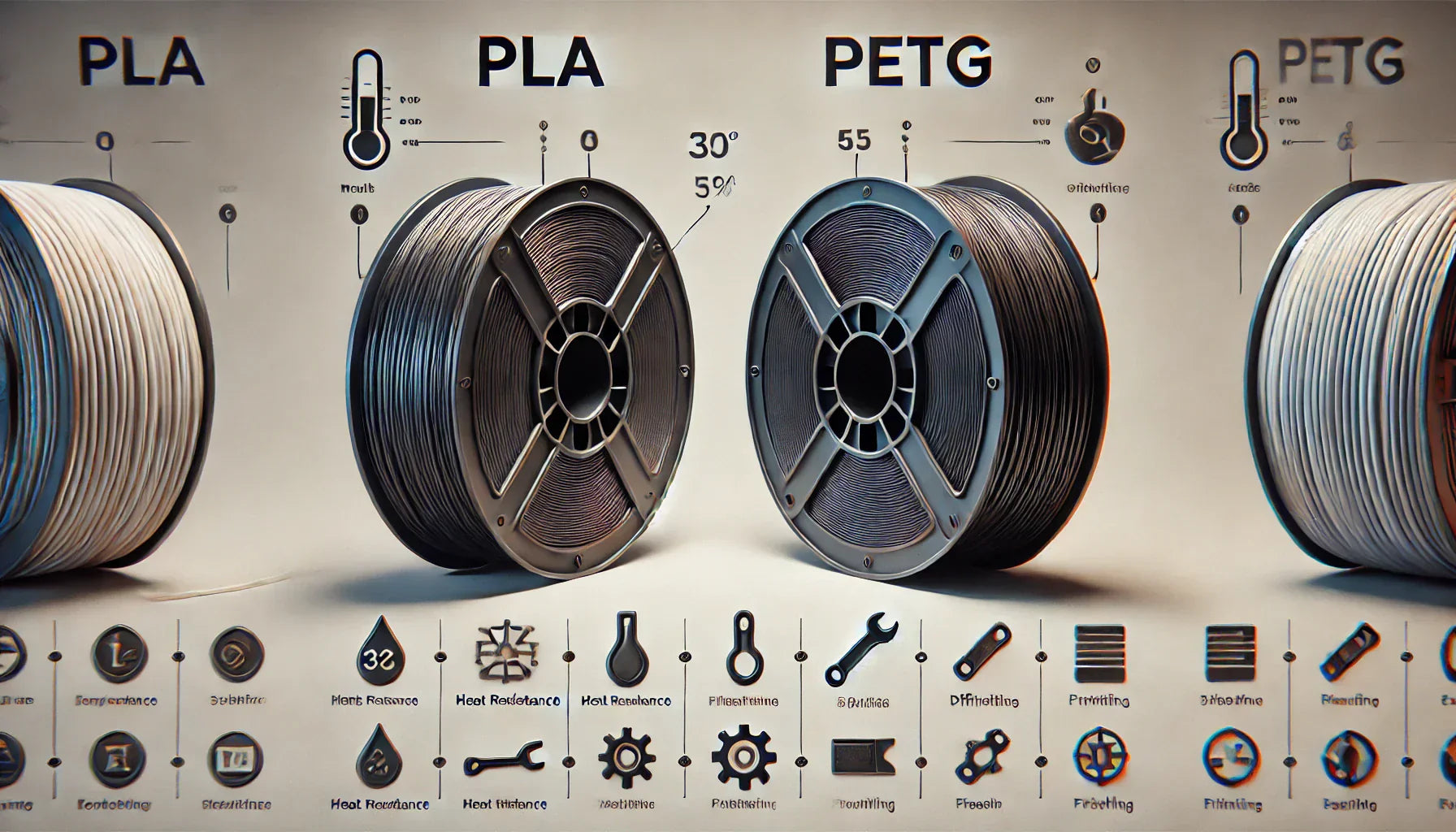When it comes to selecting the right filament for your 3D printing project, choosing between PLA (Polylactic Acid) and PETG (Polyethylene Terephthalate Glycol) can be a difficult decision. Both are popular choices among 3D printing enthusiasts, offering distinct advantages depending on the application. At 3D META, we provide a variety of high-quality PLA and PETG filaments, and we’re here to help you understand the differences between these two materials, so you can make an informed decision on which one best suits your needs.
What Is PLA?
PLA is one of the most commonly used 3D printing filaments due to its ease of use and accessibility. Derived from renewable resources like cornstarch or sugarcane, PLA is an eco-friendly, biodegradable filament. It’s a great option for beginners and hobbyists who are looking to create detailed, aesthetically pleasing prints.
Key Features of PLA:
-
Ease of Use: PLA has a low melting point (around 180°C to 220°C) and is less prone to warping, making it ideal for beginners.
-
Smooth Finish: PLA produces a shiny, smooth finish that is perfect for printing models, prototypes, and artistic pieces.
-
Environmentally Friendly: PLA is biodegradable, making it an eco-conscious choice for those looking to minimize their environmental impact.
-
Applications: PLA is best suited for decorative items, toys, and prototypes that don’t require high durability or resistance to heat.
What Is PETG?
PETG is a more advanced filament, offering higher strength and flexibility than PLA. PETG is a modified version of PET (the plastic used in water bottles) and is known for its excellent durability, impact resistance, and chemical resistance. This makes it an excellent choice for functional parts that require a balance of flexibility and strength.
Key Features of PETG:
-
Strength and Durability: PETG offers superior impact resistance, making it a great option for parts that need to withstand wear and tear.
-
Flexibility: PETG is more flexible than PLA, which allows it to resist cracking and breakage.
-
Chemical and Heat Resistance: PETG can withstand higher temperatures than PLA, and it’s resistant to many chemicals, making it suitable for more demanding applications.
-
Applications: PETG is perfect for functional parts, mechanical components, and items that will be exposed to stress or heat.
Key Differences Between PLA and PETG
1. Ease of Printing
-
PLA is easy to print with and requires minimal calibration. Its low melting point and low tendency to warp make it ideal for users who are just starting with 3D printing.
-
PETG, while still relatively easy to print, requires slightly more attention. It has a higher extrusion temperature (around 230°C to 250°C) and can be more prone to stringing. However, with proper adjustments, it’s a fantastic material for more experienced users.
2. Strength and Durability
-
PLA is not as durable as PETG and can be brittle, especially when exposed to higher temperatures. It’s best suited for decorative and non-functional prints.
-
PETG is significantly more durable, impact-resistant, and can withstand higher temperatures. It’s a better choice for functional prints and parts that need to endure stress.
3. Flexibility
-
PLA is rigid and not suitable for parts that need to bend or stretch.
-
PETG, on the other hand, has more flexibility, making it a great choice for parts that need to absorb shock or bend without breaking.
4. Environmental Impact
-
PLA is biodegradable and made from renewable resources, making it the more environmentally friendly choice.
-
PETG is recyclable but not biodegradable. While it’s durable and long-lasting, it doesn’t have the same eco-friendly properties as PLA.
5. Finish
-
PLA provides a smoother, shinier finish, making it ideal for visually appealing models or prototypes.
-
PETG tends to have a slightly glossy finish and is better suited for prints that require more durability and functionality rather than just aesthetics.
Which Filament Is Right for You?
The choice between PLA and PETG ultimately depends on your specific 3D printing needs:
-
PLA is perfect for beginners, artistic models, prototypes, and any prints that do not require extreme durability or heat resistance.
-
PETG is a better option for functional parts, mechanical components, or prints that need to withstand higher temperatures or physical stress.
Shop Now at 3D META
At 3D META, we offer high-quality PLA and PETG filaments that are perfect for a wide range of applications. Whether you’re creating intricate designs, prototypes, or durable, functional parts, our filaments ensure exceptional results with every print. Shop Now to find the perfect filament for your next project and experience the reliability and performance of 3D META products!

